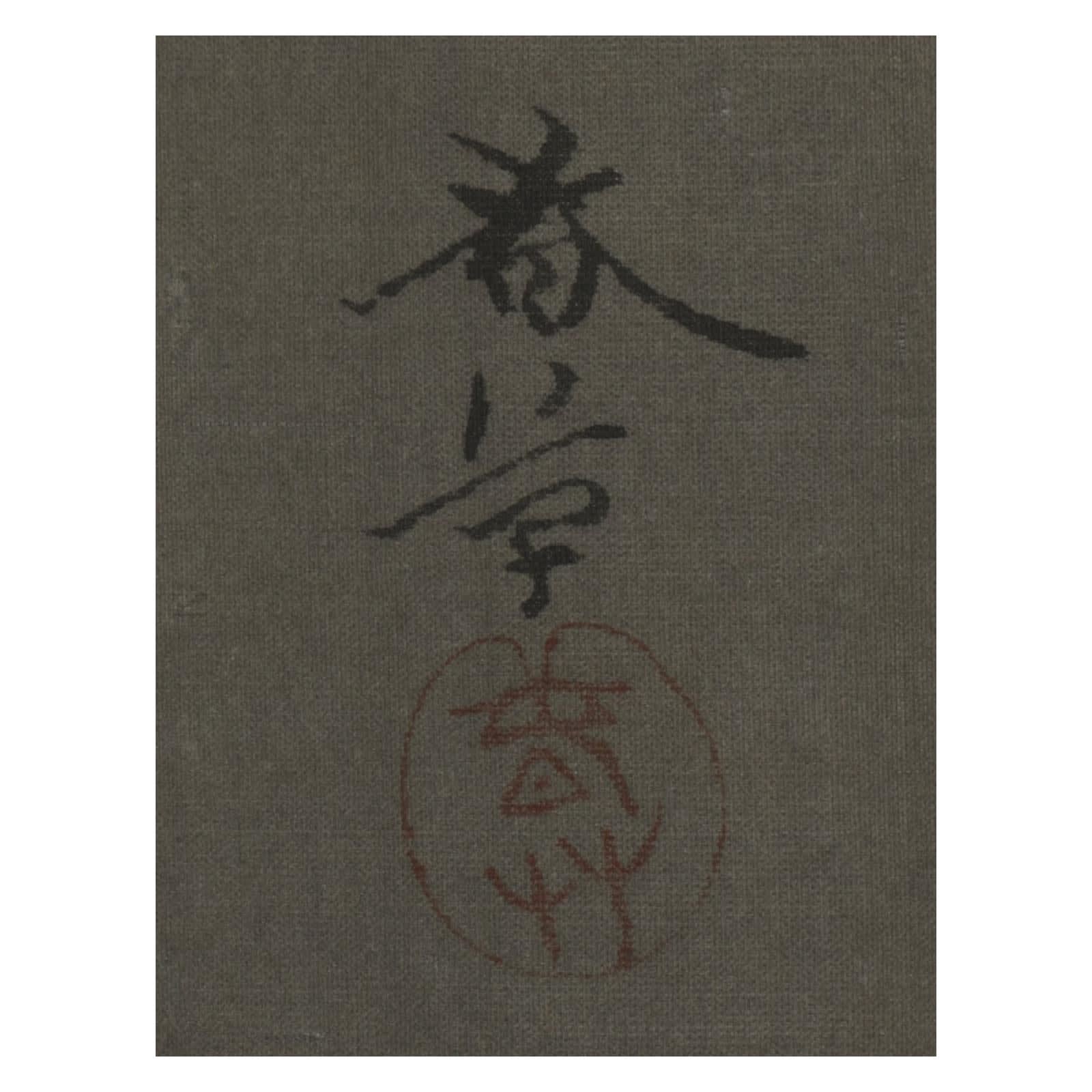Hishida Shunsō (1874–1911)
Mount Fuji
Ink on silk, hanging scroll
With authentication by Hishida Hayao, box authentication by Yokoyama Taikan, double boxed
Seal: Shunso
38.5 x 63 cm
155 x 81 cm (overall)
With authentication by Hishida Hayao, box authentication by Yokoyama Taikan, double boxed
Seal: Shunso
38.5 x 63 cm
155 x 81 cm (overall)
Further images
Exhibitions
Hishida Shunso: A Retrospective. Tokyo: The National Museum of Modern Art, Tokyo, 2014. cat. no. 54.
In response to their teacher Okakura Tenshin’s challenge to depict air, the aritsts Hishida Shunso and Yokoyama Taikan devised an innovative method of creating color gradation with shading brushes on dampened silk instead of using the traditional Japanese technique of line drawing. This style, however, was not well received and derogatorily called “hazy style” (morotai) and “dim style” (hyobyotai), thereby disrupting the framework of the Japan Art Institute (Nihon Bijutsuin), shortly after its establishment. Princess Fuse (Tokiwazu, Narrative Chant) and Kikujido, the Chrysanthemum Boy, which Shunso painted for the eighth Japan Painting Society (Nihon Kaiga Kyokai) and the 3rd Japan Art Institute Competitive Exhibition in the spring of 1900, can be said to stylistically represent this technique, though a few years later, this experimentation by Shunso and other artists gradually subsided.
The present painting, thought to be produced around 1905 or 1906, still exhibits traces of the “hazy style.” Though perhaps more interestingly is the depiction of Mount Fuji not as a peak soaring from the ground, but instead as a floating presence, which suddenly appears out of mist, fog, dusk, or some vague haziness, and not as an actual place, but as a mystical, dreamlike scenery.
In contrast, Yokoyama Taikan’s Sacred Summit Fuji (scheduled to post on Feb 16) presents a symbol of the Japanese mind. In it, Mount Fuji is enveloped in a sea of clouds from a bird’s-eye view as if seen high above from a plane at around an elevation of 5000 meters. Shunso, on the other hand, while borrowing the same subject matter, appears to have been more interested in pursuing a level of perfection in painting by maximizing the permeation of light ink wash. Regardless of technique, the artist magnicently captured the sublime form of this sacred mountain in this work.
Hishida Shunso (nihonga painter; 1874−1911)
Nagano-born nihonga painter. His real name is Mioji. Studied under Hashimoto Gaho at the Tokyo School of Fine Arts. Became a teacher of the school after his graduation. Known as one of the elite four disciples of Gaho together with Yokoyama Taikan, Shimomura Kanzan, and Kimura Buzan. Contributed to the modernization of nihonga with a technique of depiction without lines, called moro-tai (“hazy style”).
The present painting, thought to be produced around 1905 or 1906, still exhibits traces of the “hazy style.” Though perhaps more interestingly is the depiction of Mount Fuji not as a peak soaring from the ground, but instead as a floating presence, which suddenly appears out of mist, fog, dusk, or some vague haziness, and not as an actual place, but as a mystical, dreamlike scenery.
In contrast, Yokoyama Taikan’s Sacred Summit Fuji (scheduled to post on Feb 16) presents a symbol of the Japanese mind. In it, Mount Fuji is enveloped in a sea of clouds from a bird’s-eye view as if seen high above from a plane at around an elevation of 5000 meters. Shunso, on the other hand, while borrowing the same subject matter, appears to have been more interested in pursuing a level of perfection in painting by maximizing the permeation of light ink wash. Regardless of technique, the artist magnicently captured the sublime form of this sacred mountain in this work.
Hishida Shunso (nihonga painter; 1874−1911)
Nagano-born nihonga painter. His real name is Mioji. Studied under Hashimoto Gaho at the Tokyo School of Fine Arts. Became a teacher of the school after his graduation. Known as one of the elite four disciples of Gaho together with Yokoyama Taikan, Shimomura Kanzan, and Kimura Buzan. Contributed to the modernization of nihonga with a technique of depiction without lines, called moro-tai (“hazy style”).









